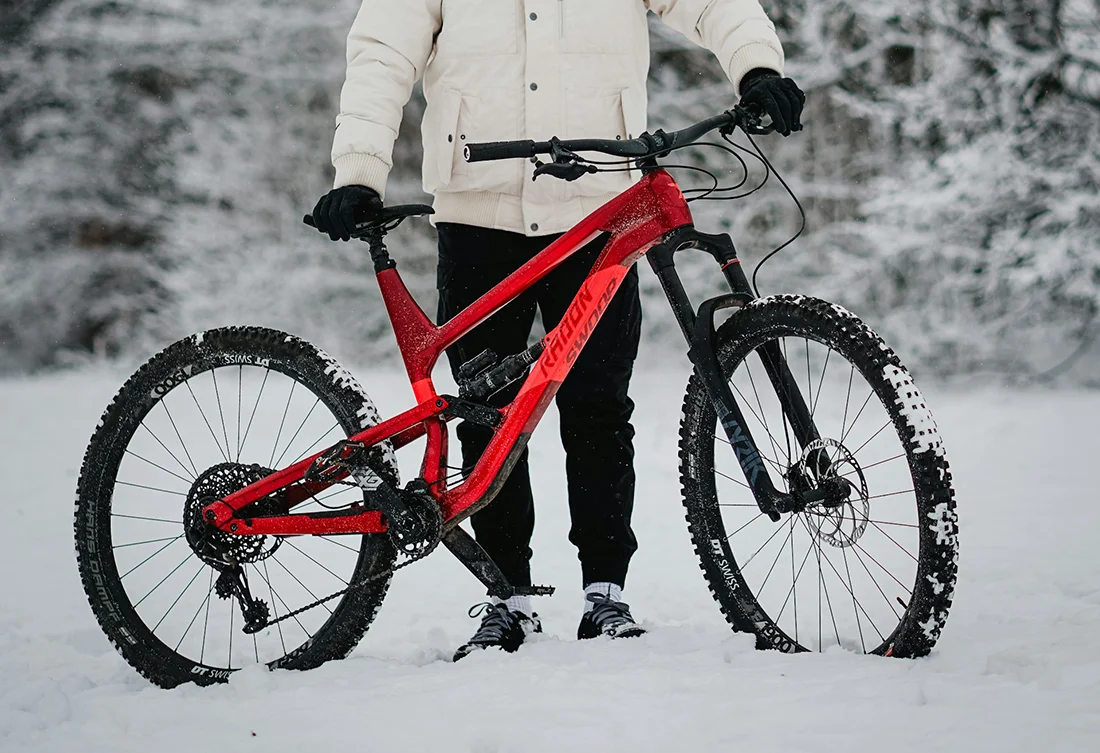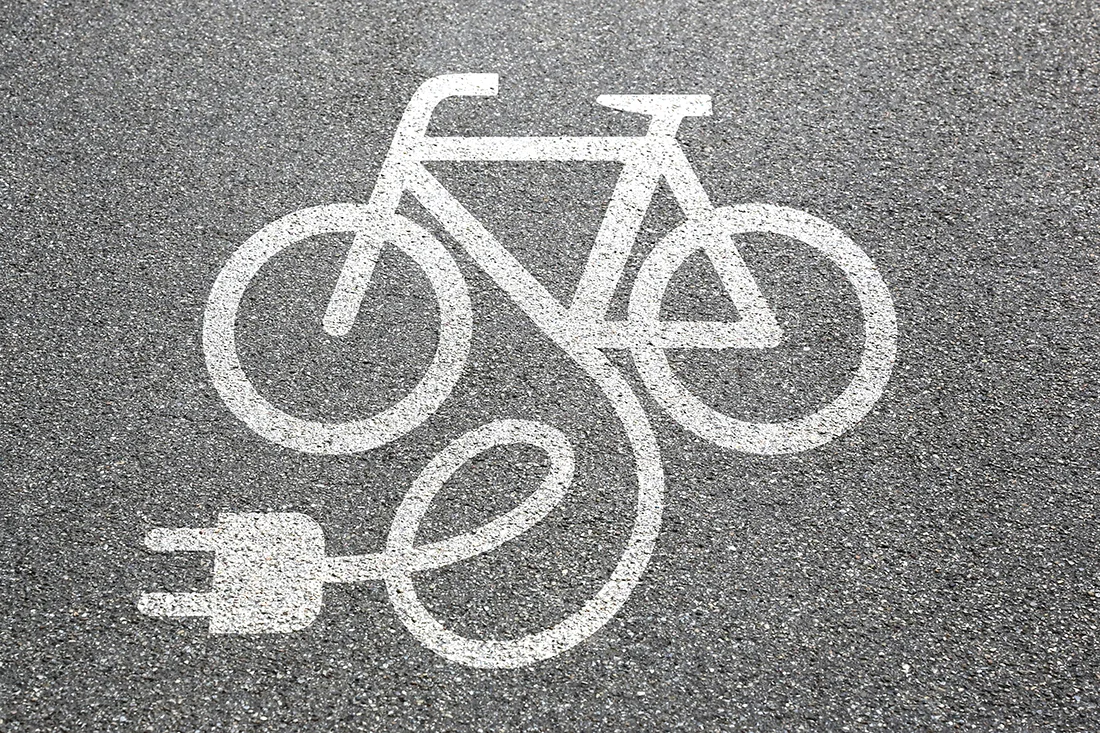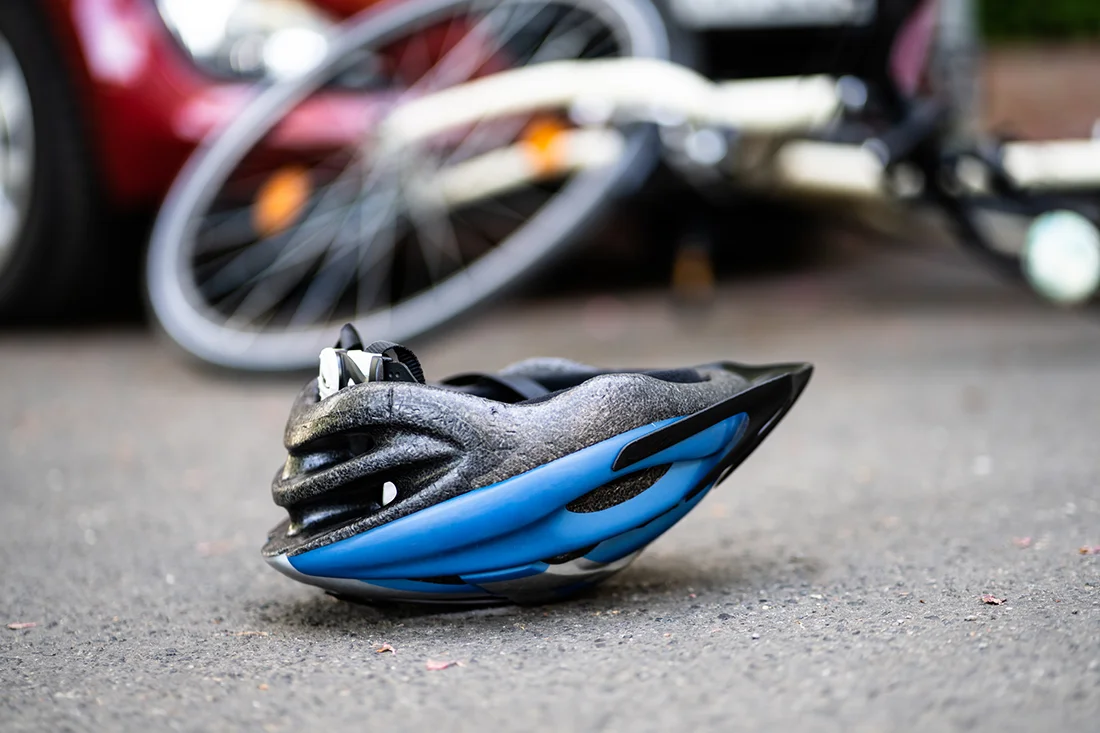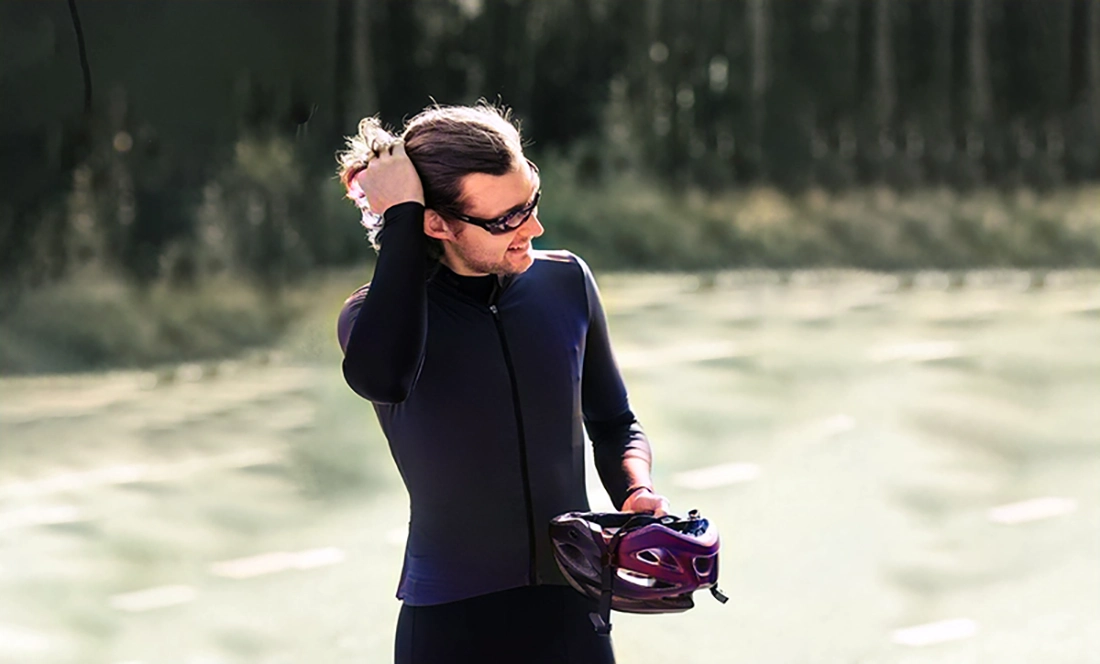With so many different types of mountain bikes available, choosing the right one as a beginner can be tough.
Mountain biking, and cycling in general, is known for long categories and subcategories of bike types designed for specific riding styles and terrain.
However, this categorization is not always clear and can get confusing if you’re trying to find the right type that fits your needs.
In this concise guide, we’ll look at the 8 most popular types of mountain bikes and explain all the most important differences between them.
By the end of this 5-minute read, you’ll know exactly what you need and where to spend your money!
Contents
Popular Types of Mountain Bikes
In this section, we’ll take a closer look at the 8 most popular types of mountain bikes that you should know about. These are:
- Cross-country mountain bikes (XC)
- Downcountry mountain bikes
- Trail mountain bikes
- All-mountain and enduro
- Downhill mountain bikes
- Fat bikes
- Dirt jump bikes
- Electric mountain bikes
In addition to these, there are other lesser known and more specialized subtypes, such as Slopestyle mountain bikes, drop-bar mountain bikes, rigid mountain bikes, freeride, and so on.
For the sake of conciseness, we’ll focus on the 8 main types that you’re most likely to encounter and ride.
1. Cross-Country Mountain Bikes (XC)
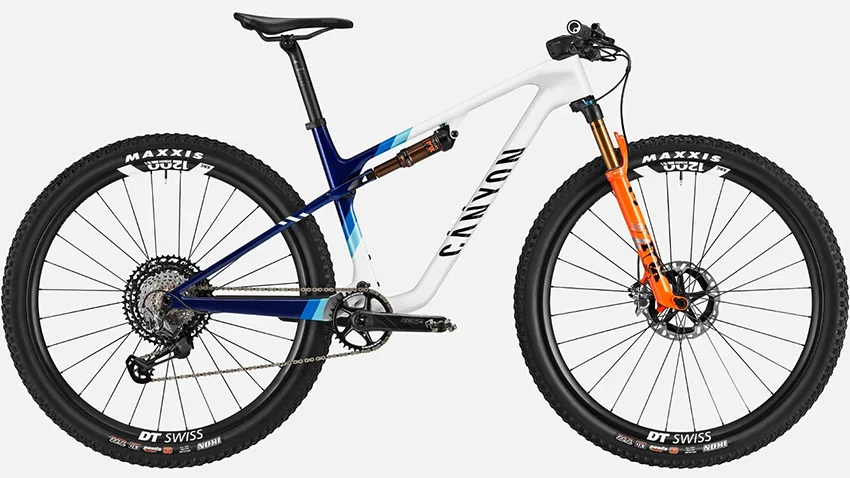
- Lightweight construction (carbon fiber or aluminum)
- Efficient, shorter-travel suspension (around 100 mm)
- Geometry designed for climbing and speed
- Fast-rolling tires for hardpacked surfaces
- Emphasis on pedaling efficiency
Cross-country mountain bikes, also known as XC mountain bikes, are the lightweight speed machines of the mountain biking sport.
They are characterized by lean aluminum or carbon fiber frames with front or dual suspension and around 100 mm of travel. Because of their focus on speed and efficiency, they typically roll on 29-inch wheels.
They are mainly used for efficient climbing, pedaling, and covering off-road distances quickly, such as on cross-country racing courses.
With around 100 mm of suspension, XC bikes excel at smoothing our bumps and rolling hills, but not so much at tackling big drops and rock gardens.
Moreover, their geometry is aggressive and puts the rider in a forward leaning position, which is great for pedaling.
If you love maintaining speed on smoother trails, fire roads, and XC races, a cross-country mountain bike is perfect for you.
Moreover, because of their simplicity, most of the best beginner’s mountain bikes under $1,000 are actually XC bikes, so they are perfect for novice riders.
2. Downcountry Mountain Bikes
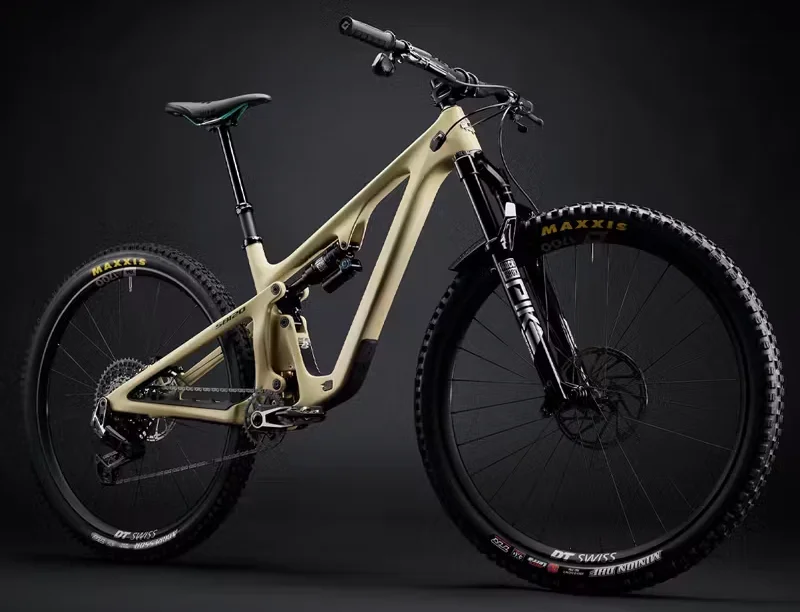
- Lightweight frame with around 120 mm of travel
- Slacker geometry for confident descending
- Aggressive tires for better grip on technical terrain
- Dropper seat post for tackling steeper descents
- Blends the efficiency of XC with the capability of trail bikes
Downcountry mountain bikes have been popularized recently and designed to fill the gap between cross-country and trail mountain bikes.
In terms of suspension, they are more capable than cross-country bikes, but not as capable as long-travel trail bikes.
This mountain bike type typically comes with a full-suspension setup that offers around 120 mm of travel. This makes downcountry bikes good for riders who want more prowess when descending without sacrificing too much climbing efficiency.
Moreover, their geometry is slacker compared to cross country bikes and the wheelbase is longer (but not as long as on trail bikes), which makes them more stable on rough, technical terrain.
This MTB type also comes equipped with wider, grippier tires and a dropper seat post, which is a testament to their descending capabilities.
To conclude, downcountry mountain bikes are great for riders who want a bike that handles as fast as an XC bike, but can tackle the same terrain as a Trail bike.
3. Trail Mountain Bikes
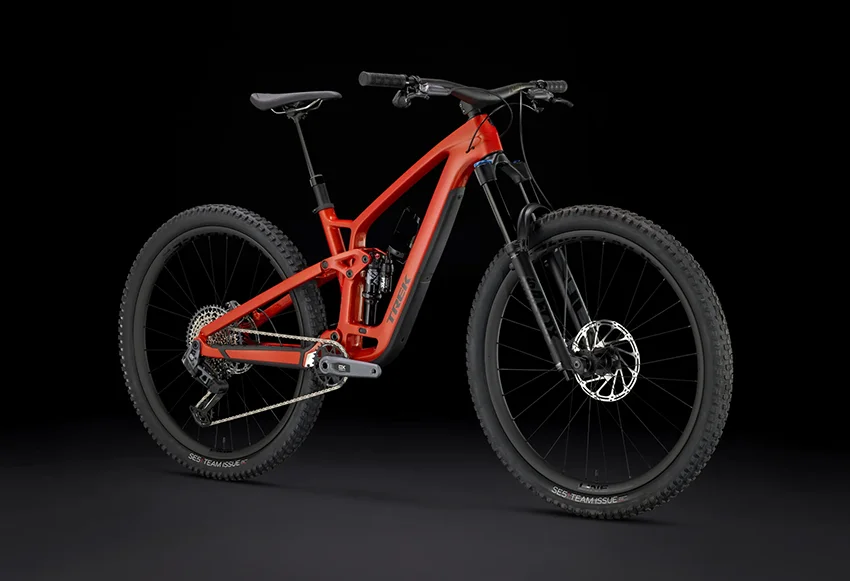
- Full-suspension frame with 130-150 mm of travel
- Balanced geometry for both climbing and descending
- Durable components to handle varied terrain
- Aggressive tires for diverse trail conditions
- The “jack-of-all-trades” of mountain bikes
Trail bikes are known as the ultimate workhorses of the mountain biking world. These are all-rounded machines that can do a little bit of everything equally well.
They offer the perfect balance between climbing and descending efficiency, but lean more toward the descending end.
Trail bikes typically have a full-suspension setup with around 130-150 mm of travel, wide tires (2.1″ and up) on 27.5″ or 29″ wheels, and sturdy aluminum or carbon fiber frames.
They can tackle a wide variety of terrains, including flowy cross-country routes, dirt roads, singletracks, and rowdy descents.
If you want to own just one mountain bike but participate in different disciplines, we recommend getting a trail bike with 130-150 mm of travel.
4. All-Mountain and Enduro Mountain Bikes
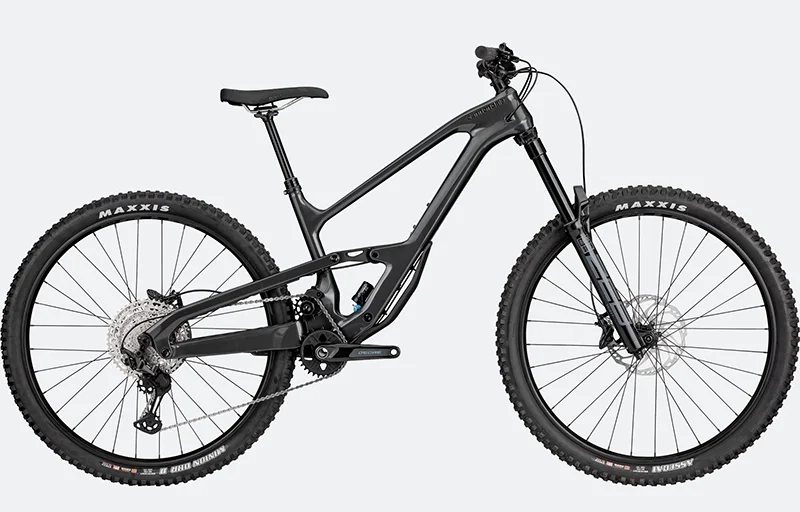
- Durable frames with long-travel suspension (150mm+)
- Slack geometry designed for aggressive descending
- Robust components to withstand big hits and jumps
- Aggressive, wide tires for grip and stability
- Prioritize downhill performance and technical terrain
All-mountain and enduro bikes are focused on descending, but are not completely specialized for downhill, such as downhill bikes.
They are built around tough aluminum or carbon fiber frames with slack geometry and long-travel suspension (around 150mm+).
This mountain bike type thrives on steep, technical descents, big jumps, and rough terrain. They are also a popular choice on urban downhill races that are typically organized by Red Bull in South American cities.
These two mountain bike types are very similar and mostly only differ in the amount of travel. All-mountain bikes have slightly less travel and are better for all-around riding, whereas enduro bikes are better for descending with slightly longer travel.
Though these bikes can tackle climbs, they can’t do it efficiently because of long travel. Therefore, they are best used for tough trails and adrenaline-fueled descents.
5. Downhill Mountain Bikes
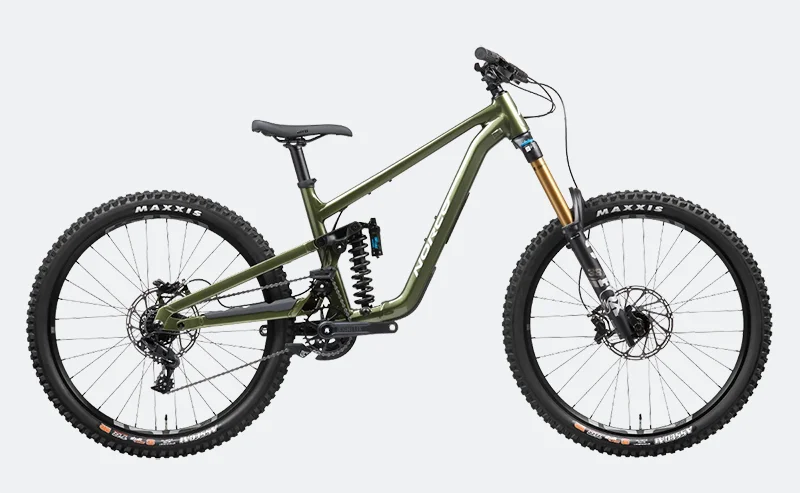
- Robust frames with long-travel suspension (200mm +)
- Slack geometry optimized for high-speed stability on steep descents
- Durable components built to withstand repeated huge impacts
- Wide, aggressive tires for maximum grip and control
- Specialized for the demands of downhill racing and bike parks
Downhill mountain bikes, also known as gravity or freeride bikes, are all about grueling, fast-paced descents, as their name implies.
As opposed to trail and enduro bikes, this type of mountain bike doesn’t want to have anything with climbing. Instead, if you’re on a downhill bike, you’ll probably take a chairlift or a shuttle car to the top of the hill and storm your way down.
Downhill mountain bikes usually have very slack geometry and a long wheelbase, which makes them stable at high speeds over rough terrain. They come with 200mm+ of travel and have wide, durable tires that can withstand hard impacts.
They also typically come with four-piston hydraulic disc brakes with 203mm rotors and have few gears because, well, you don’t need more.
6. Fat Bikes
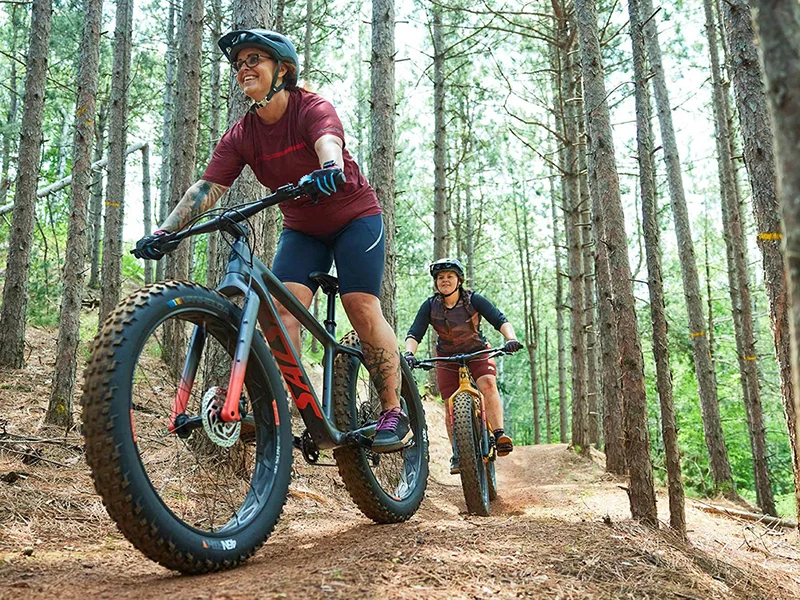
- Oversized, extremely wide tires (usually 4-inches or larger)
- Rigid or short-travel hardtail suspension
- Sturdy steel or aluminum frames
- Low tire pressure for maximum floatation
- Ideal for tackling soft terrain like snow, sand, and mud
If you’ve ever watched monster trucks tackle obstacle courses or extreme terrain, then you understand the gist of fat bikes.
Their main feature is their massive tires that are usually between 4-inches and 5-inches wide. These tires give them incredible traction and stability, so you can ride over mud, sand, snow, and sharp rocks.
Riding a fat bike feels like riding on a cloud, but they are not the best for speed or pedaling. They can feel slow and clunky because of the increased traction caused by the wide tires.
However, there’s no doubt that fat bikes can reach places that other mountain bike types can only dream of, which is why they are a popular choice for extreme bikepackers.
7. Dirt Jump Bikes
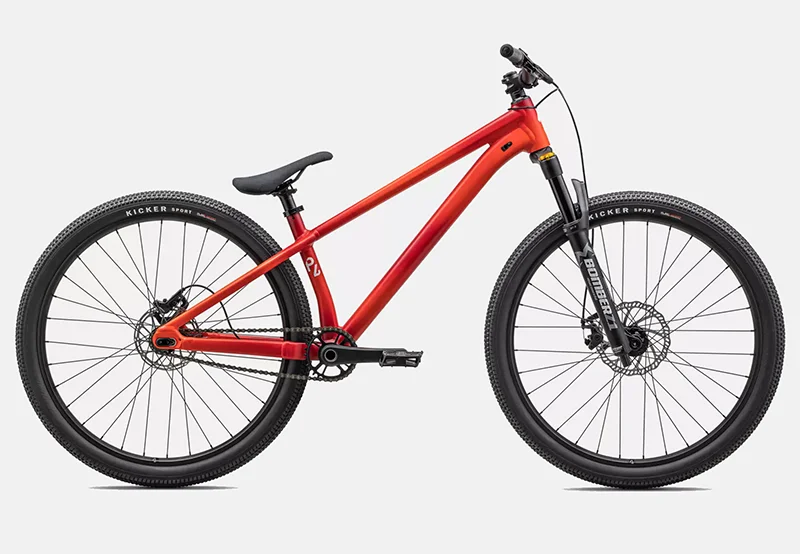
- Strong and compact frames (usually steel or aluminum)
- Rigid or short-travel suspension fork (around 100mm)
- Single-speed drivetrain for simplicity and durability
- Small wheels (often 26 inches) for agility and maneuverability
- Designed for jumping and doing tricks
Dirt jump bikes are very similar to BMX bikes in appearance and functionality. That’s why many call them the BMX bikes of the mountain biking world.
They are designed around strong and compact frames usually made from steel or aluminum. They often have 26-inch wheels or smaller, which makes it easier to handle the bike when doing tricks or jumps.
They are designed with single-speed drivetrains, rigid or short-travel suspension forks, and often have just one brake.
Dirt jump bikes are typically used for jumping, doing mid-air tricks, and taking creative lines at the bike park.
If you’re a bit of a daredevil who likes to impress others with their skills, a dirt jump bike might be the right mountain bike type for you.
8. Electric Mountain Bikes
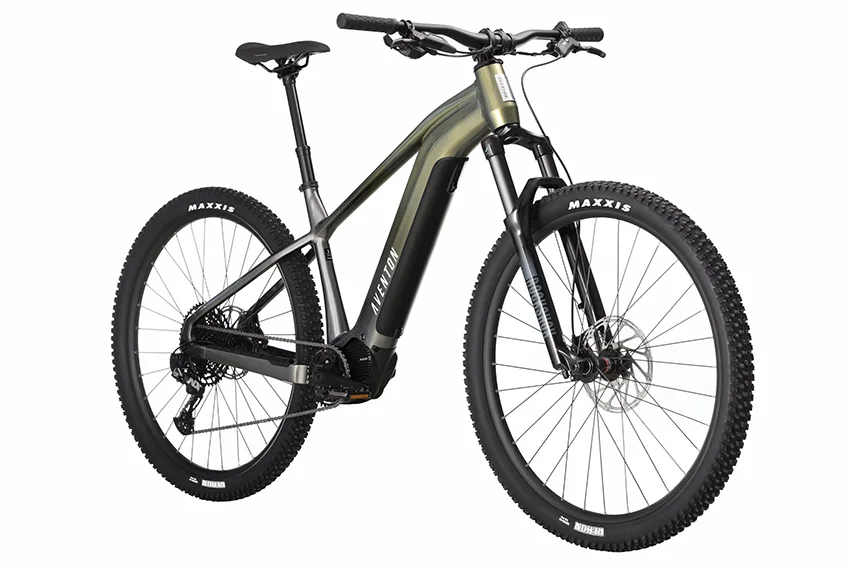
- Come with an integrated motor and battery
- Pedal-assist system helps you climb and ride faster
- Different categories available
- Offer the same fun of mountain biking with less physical strain
- Open up trails to riders with varying abilities and fitness levels
Electric mountain bikes are becoming more and more popular recently. They allow riders to explore more, ride farther, and enjoy their time on the trail with less physical strain.
E-MTBs feature an electric motor (hub or mid-drive) and battery that provide pedal assistance as you ride. This way, you can climb hills with more ease and have more energy to descend.
Almost all mountain bike types have their electric versions, so you can usually get cross-country, trail, fat, and all-mountain/enduro bikes with an electric motor. Dirt jump and downhill electric mountain bikes are not very common.
Electric mountain bikes make the trails more accessible to a wider range of riders, but it’s important to keep in mind that not all e-MTBs are allowed on trails, and not all trails allow e-MTBs.
If you want a bit of help when the trail starts going up or you’d like to be able to keep riding with a faster group, you should consider an electric mountain bike.
See Best Electric Mountain Bikes
Why Are There So Many Different Mountain Bike Types?
Mountain biking is an incredibly diverse sport with a lot of disciplines and subdisciplines.
Within these disciplines, mountain bikers tackle different types of terrains, from smooth flowing trails to steep rocky descents.
Moreover, some riders love and prioritize speed and endurance, spending long hours in the saddle and pedaling a lot, whereas others prefer the thrill of fast-paced technical descents and jumps.
The wide range of mountain bike types reflects the sport’s diverse disciplines, challenging terrain, and varied rider preferences.
This is why cycling brands have developed different types of mountain bikes that excel in specific conditions.
Depending on your goals and the terrain you’ll ride on, you want to choose the right mountain bike type for those conditions.
Using the right bike type for the right discipline means you’ll get the best performance, highest safety, and the most enjoyable riding experience.
Mountain Bike Suspension Types
Mountain bike suspension is one of the most important features of a mountain bike. It improves stability, handling, and speed; but also enhances safety and comfort.
Based on the type of suspension they have, mountain bikes fall into three main categories:
- Rigid mountain bikes: These mountain bikes have no suspension at all and remind us of old-school MTBs from the 1990s. They are known to be lightweight, but are limited to smoother, hardpacked trails. In addition to off-roading, some riders also love using them for bikepacking and bicycle touring.
- Hardtail mountain bikes: They feature a suspension fork at the front wheel but have a rigid rear end. The front suspension fork absorbs impacts, while the static rear end makes these bikes efficient for climbing and fast-paced smooth trails. Hardtail mountain bikes are also more affordable than their full-suspension counterparts.
- Full-suspension mountain bikes: With both front and rear suspension, these bikes provide the maximum amount of comfort and control on rough terrain. They are ideal for tackling technical singletrack trails, doing jumps, and riding over roots and rock gardens. Full-suspension mountain bikes are heavier and more expensive than hardtails, but are more forgiving on the trails.
Which type should you choose? It depends on the type of riding you plan to do. However, if you’re just starting out, we recommend getting a hardtail first as it will help you learn the right riding techniques before transitioning to a full-suspension rig and tackling more demanding trails.

